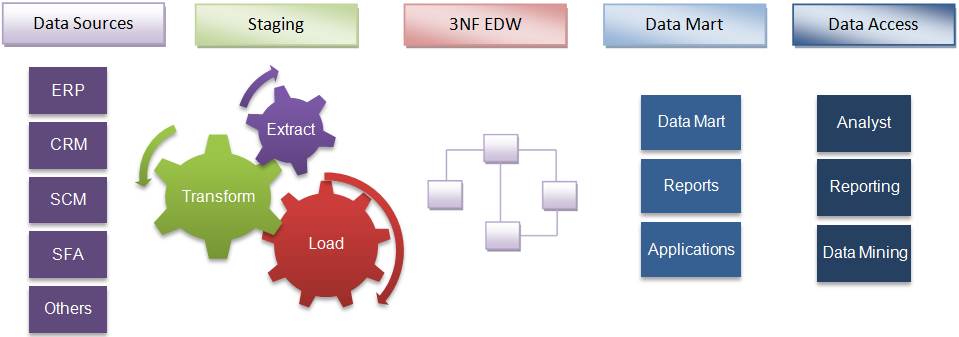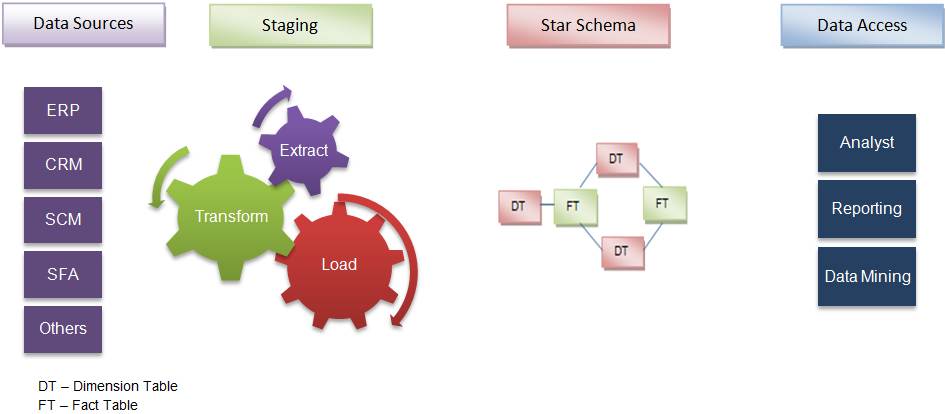When it comes to designing a data warehouse for your business, the two most commonly discussed methods are the approaches introduced by Bill Inmon and Ralph Kimball. Debates on which one is better and more effective have been on for years. But a clear cut answer has never been arrived upon, as both philosophies have their own advantages and differentiating factors, and enterprises continue to use either of these.
Bill Inmon’s enterprise data warehouse approach (the top-down design): A normalized data model is designed first. Then the dimensional data marts, which contain data required for specific business processes or specific departments are created from the data warehouse.
Ralph Kimball’s dimensional design approach (the bottom-up design): The data marts facilitating reports and analysis are created first; these are then combined together to create a broad data warehouse.
Inmon defines the data warehouse in the following terms:
Inmon’s top-down approach
Subject-oriented: The data in the data warehouse is organized so that all the data elements relating to the same real-world event or object are linked togetherTime-variant: The changes to the data in the database are tracked and recorded so that reports can be produced showing changes over time
Non-volatile: Data in the data warehouse is never over-written or deleted -- once committed, the data is static, read-only, and retained for future reporting
Integrated: The database contains data from most or all of an organization's operational applications, and that this data is made consistent
Kimball’s bottom-up approach
Inmon defines data warehouse as a centralized repository for the entire enterprise. Data warehouse stores the ‘atomic’ data at the lowest level of detail. Dimensional data marts are created only after the complete data warehouse has been created. Thus, data warehouse is at the center of the Corporate Information Factory (CIF), which provides a logical framework for delivering business intelligence.
Keeping in mind the most important business aspects or departments, data marts are created first. These provide a thin view into the organizational data, and as and when required these can be combined into a larger data warehouse. Kimball defines data warehouse as “A copy of transaction data specifically structured for query and analysis”.
Kimball’s data warehousing architecture is also known as Data Warehouse Bus (BUS). Dimensional modeling focuses on ease of end user accessibility and provides a high level of performance to the data warehouse.

